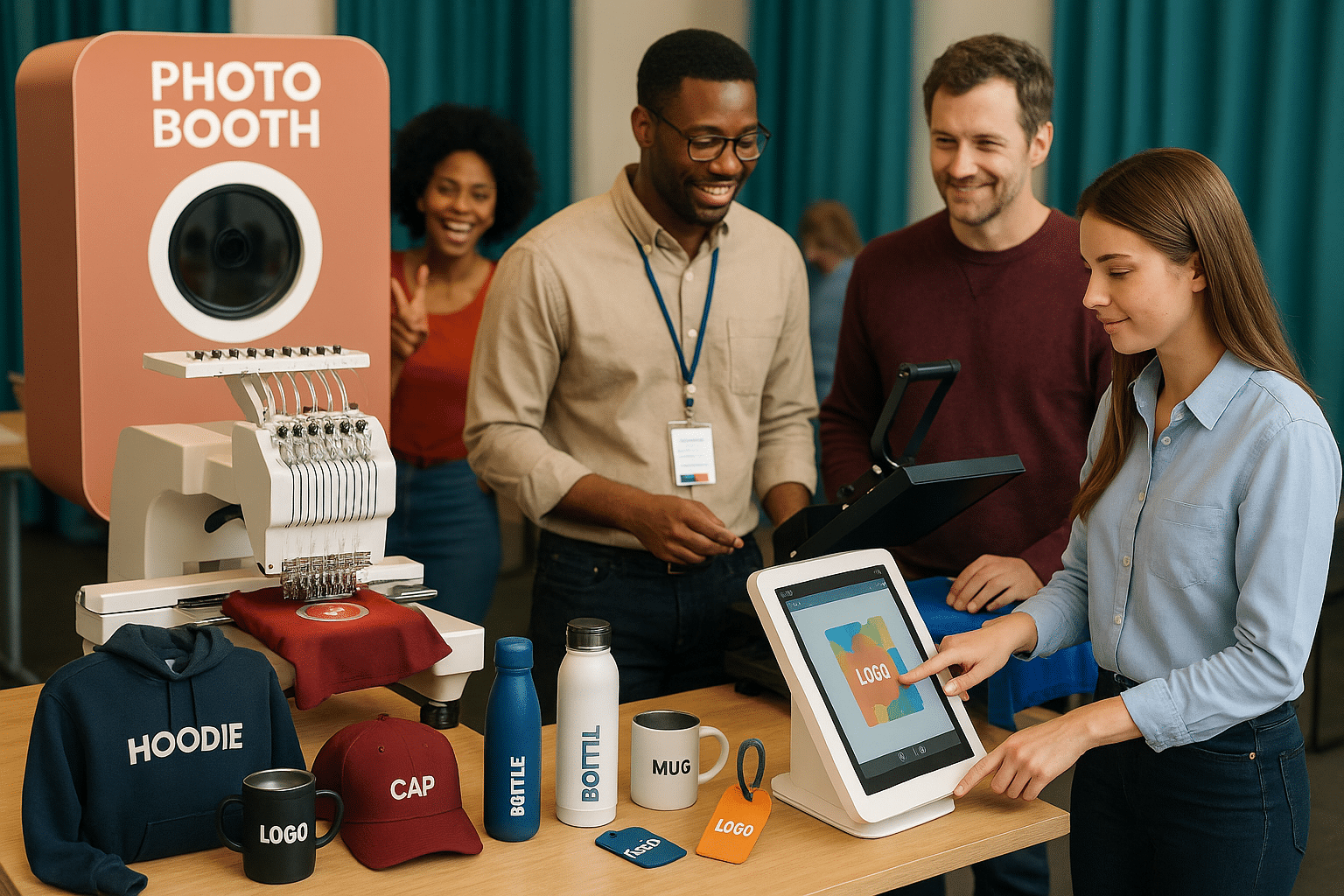Mastering Event Planning: Innovative Tips for Unforgettable Experiences
Mastering Event Planning: Innovative Tips for Unforgettable Experiences

Event planning combines creativity and strategy to create memorable experiences. This article delves into essential event planning tips, highlighting interactive trends, DIY inspiration, and effective marketing strategies. Additionally, we will explore unique merchandise options including thermal bottles, mugs, and laser-engraved products that can enhance any event’s branding.
Essential Tips for Effective Event Planning
Event planning is an intricate dance of creativity, logistics, and an understanding of your audience’s needs. It requires an organized approach from the initial concept all the way through to execution. To ensure a successful event that resonates with attendees and leaves a lasting impression, it’s essential to prioritize several key strategies.
First and foremost, setting clear objectives is critical. What do you want to achieve with your event? Whether it’s raising brand awareness, promoting a product, or connecting with a target audience, the goals will guide every decision you make. Consider using the SMART criteria—making objectives Specific, Measurable, Achievable, Relevant, and Time-bound. For example, if your aim is to increase attendance, you might set a goal of attracting 500 participants within a month of marketing the event. This approach not only clarifies your vision but also helps in measuring the success of your initiative.
Understanding your audience is equally paramount. Conducting thorough research will uncover preferences, interests, and pain points that inform your decisions about the theme, venue, and activities. Tools like surveys and social media polls can provide valuable insights that allow you to personalize the experience. For instance, if your target demographic skews younger, incorporating interactive trends, such as hiring a photo booth, can significantly increase engagement. The fun element of a photo booth paired with props and backdrops can create memorable experiences, allowing attendees to capture their excitement, which they may share on social media—ultimately extending your event’s reach.
Logistics are another pillar of effective event planning. Selecting the ideal venue involves more than just finding a beautiful space; it includes considering factors such as capacity, accessibility, and ambiance. Think about the practicalities: Is the venue equipped with appropriate technology for presentations or performances? Does it offer enough space for interactive elements like gaming areas or product demonstrations? It’s also vital to understand the layout of the venue; ensure there’s room for attendees to mingle comfortably while also facilitating easy flow from one activity to the next.
Creating a detailed timeline can streamline your planning process and ensure you stay on track. A comprehensive schedule acts as a roadmap, outlining every step from the planning stages to the final event day. Break tasks down into manageable segments, allocating specific deadlines for each item. For example, if you need to buy a photo booth, set a date for when you will research options, another for contacting vendors, and so forth. This not only helps in maintaining momentum but also in identifying potential issues before they arise.
Budget management cannot be understated. A clear budget allows you to allocate resources efficiently and minimize overspending. Start by categorizing expenses—such as venue rental, marketing, catering, decorations, and entertainment—before estimating costs associated with each category. It’s prudent to include a contingency fund in your budget for unexpected expenses that may crop up. Understanding your expenses also enables you to make informed decisions about prioritizing some aspects over others. For instance, if your budget is constrained, you may opt to buy a photo booth instead of renting, saving you money in the long term.
Incorporating thematic elements can significantly elevate the attendee experience. A cohesive theme not only makes your event visually appealing but also fosters a strong brand presence. Whether the theme is aligned with the season, an upcoming product launch, or even a social cause, ensure that it’s interwoven into every aspect—from invites to décor, to even the dress code. Visual engagement can be further enhanced by the inclusion of interactive elements like customized giveaways such as thermal bottles, mugs, or caps that attendees can take home. These branded items not only serve as mementos but also as marketing tools when displayed in everyday environments.
Entertainment is crucial for maintaining energy and excitement throughout the event, and it’s important to think about diversity in offerings. Consider not only the headlining acts, such as live bands or speakers, but also interactive booths like games or appreciation stations. An engaging performer can also work in tandem with a photo booth, encouraging attendees to engage as they laugh and create spontaneous memories.
Behind-the-scenes work is often overlooked but is essential for ensuring everything runs smoothly. Assemble a reliable team who understands their roles, and schedule practice meetings leading up to the event. Delegate responsibilities, so every team member knows their expectations and how they contribute to the overarching goals. Offering staff uniforms or branded apparel can create a sense of unity and professionalism among the team.
Capturing success stories through testimonials or follow-up surveys post-event drives home the effectiveness of your planning and execution. Asking attendees for their feedback provides insights into what worked well and what could improve for future events. Highlight these success stories in your marketing materials, showcasing the positive experience participants had and sharing images from the photo booth to serve as visual proof of the fun and engagement generated.
Lastly, remember that successful event planning is an ongoing learning experience. Analyze the various components after your event is complete; what could have been done differently? What did the attendees rave about? This assessment will refine your skills and strategies for future endeavors, ensuring your next event is even more unforgettable.
By mastering these essential event planning strategies, you will not only create an unforgettable experience for your attendees but also foster lasting memories that strengthen your brand’s presence in the industry.
Conclusions
In conclusion, successful event planning requires a mix of innovation, hands-on creativity, and strategic marketing. By embracing interactive trends and DIY inspiration, you can craft an unforgettable experience that resonates with attendees. Remember, the right promotional items can elevate your brand and leave a lasting impression.




